Description
The painting shows the donor's bust from three-quarters, the face looking at the viewer. As in other portraits by Lotto, the subject is portrayed with a striking realism, including the reddish complexion, the hollows under the eyes, the expressive blue eyes and the light epidermic imperfections. The curly hair is partially getting out from the black biretta. Such an attention to details was inspired by Antonello da Messina, in turn influenced by the Flemish art and perhaps directly by Northern European artists such as Albrecht Dürer, whose drawings could have been seen by Lotto
The red mantel is backed by a green embroidered drapery, a common element of Venetian painting of the period. The roll is perhaps an allusion to the sentence against the conjurers who had attempted to de Rossi's life two years before.
The Allegory has an inscription on its reverse which describes the portrait:
| Inscription | English translation |
|---|
| BERNARD. RVBEVS | Bernardo Rossi |
| BERCETI COM. PONT | of Berceta, Papal Count [Bishop] |
| TARVIS. NAT. | of Treviso, age |
| ANN. XXXVI. MENS. X.D.V. | 36 years, 10 months, 5 days, |
| LAVRENT.LOTVS P. CAL. | Painted by Lorenzo Lotto, |
| IVL. M.D.V. | July 1, 1505 |

Luca Giordano was an Italian late-Baroque painter and printmaker in etching. Fluent and decorative, he worked successfully in Naples and Rome, Florence, and Venice, before spending a decade in Spain.

Lorenzo Lotto was an Italian painter, draughtsman, and illustrator, traditionally placed in the Venetian school, though much of his career was spent in other north Italian cities. He painted mainly altarpieces, religious subjects and portraits. He was active during the High Renaissance and the first half of the Mannerist period, but his work maintained a generally similar High Renaissance style throughout his career, although his nervous and eccentric posings and distortions represented a transitional stage to the Florentine and Roman Mannerists.

Giovanni di Niccolò de Luteri, better known as Dosso Dossi, was an Italian Renaissance painter who belonged to the School of Ferrara, painting in a style mainly influenced by Venetian painting, in particular Giorgione and early Titian.
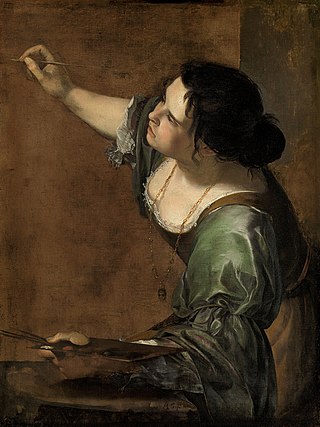
Artemisia Lomi or Artemisia Gentileschi was an Italian Baroque painter. Gentileschi is considered among the most accomplished seventeenth-century artists, initially working in the style of Caravaggio. She was producing professional work by the age of 15. In an era when women had few opportunities to pursue artistic training or work as professional artists, Gentileschi was the first woman to become a member of the Accademia di Arte del Disegno in Florence and she had an international clientele.

Simon Vouet was a French painter who studied and rose to prominence in Italy before being summoned by Louis XIII to serve as Premier peintre du Roi in France. He and his studio of artists created religious and mythological paintings, portraits, frescoes, tapestries, and massive decorative schemes for the king and for wealthy patrons, including Richelieu. During this time, "Vouet was indisputably the leading artist in Paris," and was immensely influential in introducing the Italian Baroque style of painting to France. He was also "without doubt one of the outstanding seventeenth-century draughtsmen, equal to Annibale Carracci and Lanfranco."
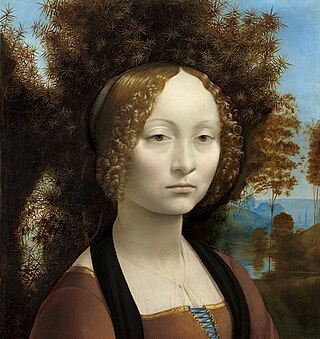
Ginevra de' Benci is a portrait painting by Leonardo da Vinci of the 15th-century Florentine aristocrat Ginevra de' Benci. Exhibited at the National Gallery of Art in Washington, D.C., it is the only painting by Leonardo on public view in the Americas.

Jusepe de Ribera was a painter and printmaker, who along with Francisco de Zurbarán, Bartolomé Esteban Murillo, and the singular Diego Velázquez, are regarded as the major artists of Spanish Baroque painting. Referring to a series of Ribera exhibitions held in the late 20th century, Philippe de Montebello wrote "If Ribera's status as the undisputed protagonist of Neapolitan painting had ever been in doubt, it was not longer. Indeed, to many it seemed that Ribera emerged from these exhibitions as not simply the greatest Neapolitan artist of his age but one of the outstanding European masters of the seventeenth century." Jusepe de Ribera has also been referred to as José de Ribera, Josep de Ribera, and Lo Spagnoletto by his contemporaries, early historians, and biographers.
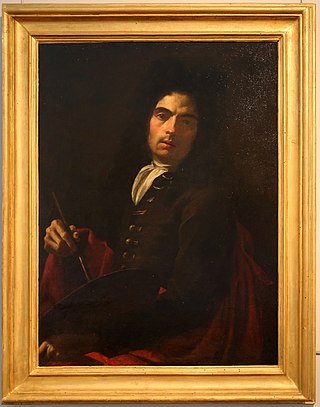
Corrado Giaquinto was an Italian Rococo painter.

Museo di Capodimonte is an art museum located in the Palace of Capodimonte, a grand Bourbon palazzo in Naples, Italy. The museum is the prime repository of Neapolitan painting and decorative art, with several important works from other Italian schools of painting, and some important ancient Roman sculptures. It is one of the largest museums in Italy. The museum was inaugurated in 1957.
Events from the year 1505 in art.

The Allegory of Faith, also known as Allegory of the Catholic Faith, is a Dutch Golden Age painting by Johannes Vermeer from about 1670–1672. It has been in the Metropolitan Museum of Art in New York since 1931.

The Portrait of a Young Man with a Lamp is an oil-on-canvas painting by the Italian High Renaissance painter Lorenzo Lotto, dating to c. 1506. It is housed in the Kunsthistorisches Museum of Vienna, Austria.
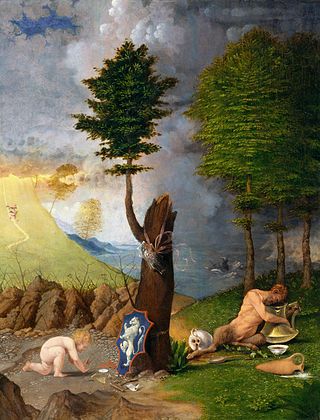
The Allegory of Virtue and Vice is an oil-on-panel painting by the Italian High Renaissance painter Lorenzo Lotto, dating to 1505. It is housed in the National Gallery of Art in Washington, DC, United States.

Malchiostro Annunciation is a painting by the Italian Renaissance artist Titian, completed around 1520, and housed in the Cathedral of Treviso, northern Italy.
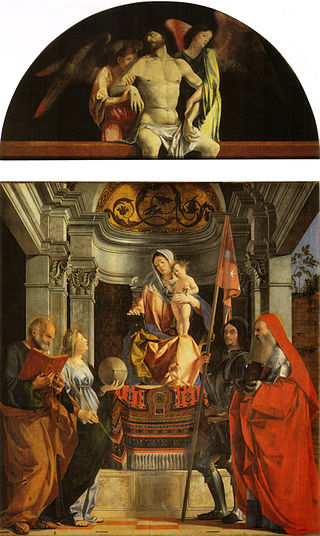
Santa Cristina al Tiverone Altarpiece is an oil-on-panel painting by the Italian Renaissance painter Lorenzo Lotto, executed around 1504–1506. It is still housed in its original location, the parish church of Santa Cristina in Quinto di Treviso, a frazione of Treviso, northern Italy.

Nicola Maria Rossi, also known as Nicolò Maria was an Italian painter of the late-Baroque.

Madonna and Child with St Peter Martyr and a Donor is a 1503 oil-on-panel painting by Lorenzo Lotto, the first known work by the artist, painted early in his time in Treviso. The two figures to the left are Peter Martyr and a donor or the infant John the Baptist. Its date is inscribed on the reverse as "1503 adì 20 septembris" and – although it is not in Lotto's handwriting as seen in documents – it is a 16th-century hand and therefore accepted.

Allegory of Chastity is a c.1505 oil-on-panel painting by the Italian Renaissance artist Lorenzo Lotto.

Saint Jerome in Penitence is an oil-on-panel painting by Italian Renaissance artist Lorenzo Lotto. Its signature ("Lotus") is fully legible, but the final number of the date is illegible, though it is usually dated to around 1506. It is now in the Louvre.


















